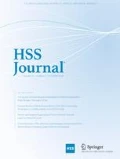The article by Thomas et al. [1] is an important review of the vast experience of the radiologists and surgeons from Norwich and adds to the existing fund of knowledge that we have about adverse reactions surrounding metal on metal arthroplasties. As noted by the investigators, adverse reaction to metal debris is not uncommonly found in asymptomatic individuals, in the absence of subjective clinical symptoms such as pain and gait alteration. Serum ion levels have been demonstrated to be insufficient markers by which to monitor synovial reactions to arthroplasty. MRI, using artifact reduction protocols, has proven efficacious in diagnosing adverse reactions to implants, thereby allowing clinicians and orthopedic surgeons to appropriately direct management, including potential revision. An important finding from the Thomas study is that while severe early adverse tissue reactions are associated with significant morbidity, mild synovial expansions may be stable for years, as assessed by their longitudinal assessment of these patients.
The findings noted in the recent review presented during the 2013 Freiberger Lecture by Dr. Toms are not dissimilar from the findings of our own MRI laboratory and clinical collaborators. In a recent study of 74 hips in 69 patients with metal on metal resurfacing arthroplasties, both symptomatic and asymptomatic patients were studied, and the magnitude of abnormal synovial response was similar in both the symptomatic and asymptomatic cohorts. However, in the subgroup of patients who underwent revision, the mean volume of synovitis in patients who had an adverse tissue reaction confirmed at revision was higher [2]. In a recently published paper, our group has found that a collection of MR parameters had 90% sensitivity and 86% specificity for determining an adverse histologic score (based on retrieval specimens). In predicting intraoperative damage, these imaging findings had 94% sensitivity and 87% specificity [3]. Our group has found the use of a prototype pulse sequence, developed in collaboration with GE Healthcare, entitled Multi-Acquisition Variable Resonance Image Combination, to be efficacious, particularly in the metal on metal cohorts, as well as in discerning adverse tissue reaction around the trunnion or modular stems in nonmetal implants. A recent study in adverse tissue reactions secondary to tribocorrosion has demonstrated that both synovial thickness and the presence of more solid components highly correlate to adverse tissue reactions confirmed at revision surgery.
Thus, the findings in the presented study by Dr. Tom's group, as well as the work being done at our own institution, confirm that MRI is the most useful way by which to detect abnormal synovial response to implants. Radiographic assessment, clinical symptoms, and serum ion levels alone do not predict the presence and extent of adverse tissue reaction. Further longitudinal assessment of these cohorts will be necessary in order to develop predictive models of time to revision, based on a certain magnitude of synovial load or maximum synovial thickness.
References
Thomas MS, Wimhurst JA, Nolan JF, Toms AP. Imaging metal-on-metal hip replacements: The Norwich experience. HSSJ 2013. doi:10.1007/s11420-013-9357-5.
Nawabi DH, Hayter CL, Su EP, et al. Magnetic resonance imaging findings in symptomatic versus asymptomatic subjects following metal-on-metal hip resurfacing arthroplasty. J Bone Joint Surg. 2013; 95(10): 895-902.
Nawabi DH, Gold SL, Lyman S, Fields K, Padgett DP, Potter HG. MRI predicts ALVAL and tissue damage in metal-on-metal hip arthroplasty. Clin Orthop Relat Res 2013. doi:10.1007/s11999-013-2788-y.
Disclosures
Conflict of Interest:
Hollis G. Potter, MD receives payments and institutional research support from General Electric Healthcare, outside the work.
Human/Animal Rights:
This article does not contain any studies with human or animal subjects performed by the any of the authors.
Informed Consent:
N/A
Required Author Forms
Disclosure forms provided by the authors are available with the online version of this article.
Author information
Authors and Affiliations
Corresponding author
Electronic supplementary material
Below is the link to the electronic supplementary material.
ESM 1
(PDF 510 kb)
Rights and permissions
Open Access This article is distributed under the terms of the Creative Commons Attribution 2.0 International License ( https://creativecommons.org/licenses/by/2.0 ), which permits unrestricted use, distribution, and reproduction in any medium, provided the original work is properly cited.
About this article
Cite this article
Potter, H.G. Commentary on an Article by Marianna S. Thomas, FRCR, et al.: “Imaging Metal-on-Metal Hip Replacements: The Norwich Experience”. HSS Jrnl 9, 293–294 (2013). https://doi.org/10.1007/s11420-013-9355-7
Received:
Accepted:
Published:
Issue Date:
DOI: https://doi.org/10.1007/s11420-013-9355-7

